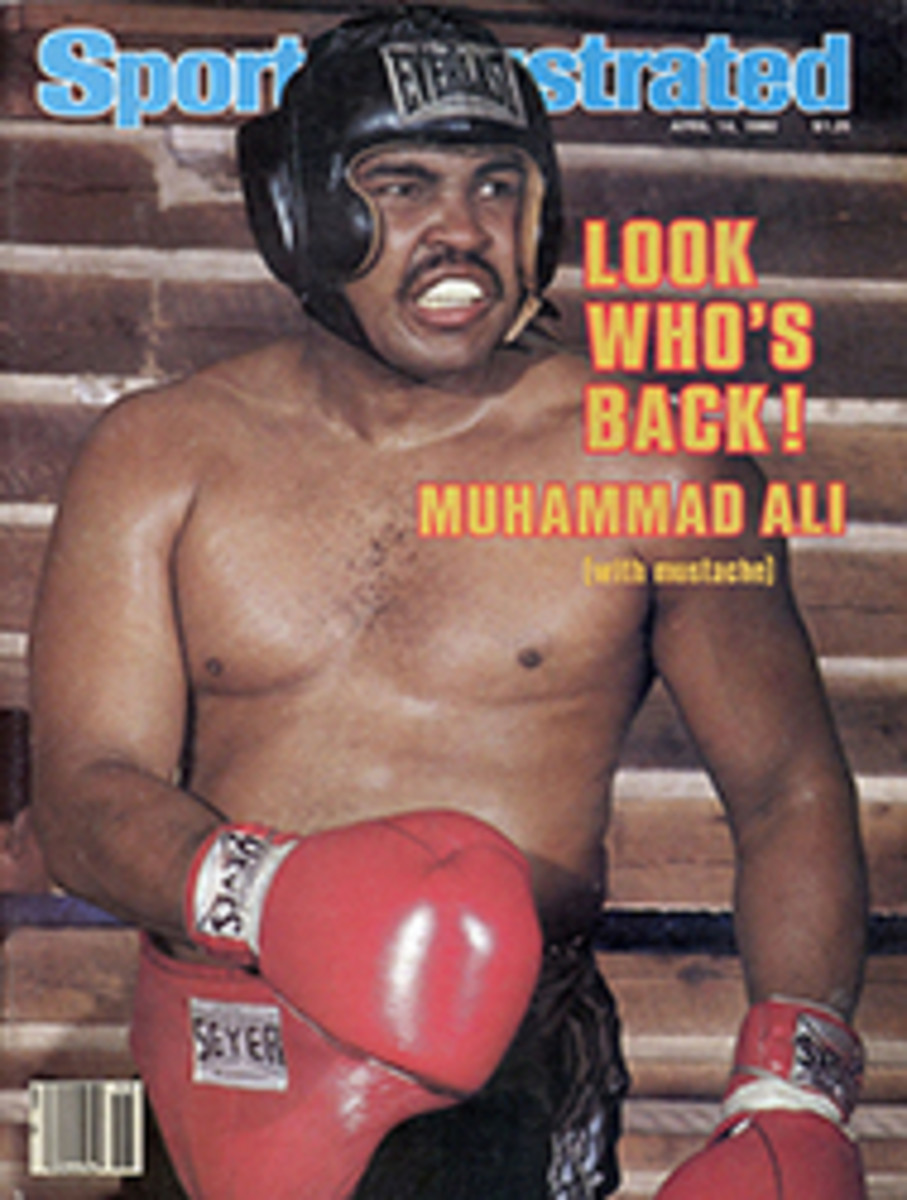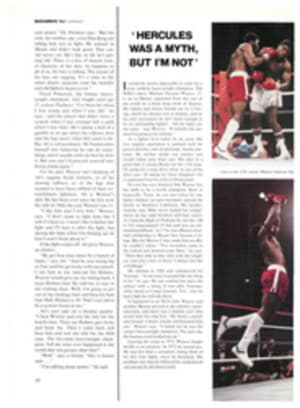
Who's new socks it to a Who's Who
California horseplayers scanning a Racing Form encounter a veritable Who's Who of jockeydom: national riding champions Delahoussaye E, Hawley S, McCarron C J, McHargue D G, Pincay L Jr, and Shoemaker W. Nevertheless, more often than not, the name that captures their eye is Valenzuela P A, who until late last month was "Patrick Valenzuela in the Santa Anita program. The asterisk, or "bug," identified Pat Valenzuela, 17, as an apprentice with a five-pound weight allowance whenever he rode. And when he rode he gave his elders fits, becoming, among other things, the first apprentice to win more than $1 million at Santa Anita. But what, people wondered, would happen when he lost his bug.
What happened was that on his first day without the allowance Valenzuela P A rode three winners in a row. Three days later he won the first stakes race of his career, on Great Lady M in the $46,100 Las Cienegas. Soon after that he scored a stunning upset with a 25-to-1 shot, Codex, in the prestigious Santa Anita Derby. That was a nice little race worth $184,700, including a winner's share of $117,200.
"I knew right along that I wouldn't have too much trouble adapting to riding without the bug," says Valenzuela. "Many trainers had been using me in stakes races anyway, and I didn't have the five pounds then. But the win on Codex should help me a great deal because it'll bring more attention to me."
How much attention does the kid want? In the jockeys' rooms the other riders had already been giving him a rough time because he was taking huge sums out of their pockets. As Valenzuela watched videotapes of his races, another jockey might say, "Bug, you moved too quickly on that horse," or, "You had trouble switching your stick, Bug." But Valenzuela rarely answered back, taking the guff with good grace, responding most often with a wan smile.
If the kidding threatened to get out of hand, Valenzuela I, for Ismael, more commonly known as Milo, stepped in. Milo, 46, but still a rider on the California tracks, is Pat's uncle and the most famous of the five Valenzuelas who have ridden in the U.S. Milo won the Kentucky Derby twice, with Tim Tam and Forward Pass, and he rode the great Kelso better than anyone else.
Milo's eyes would twinkle with amusement as he watched Shoemaker W, Pincay L and others needle his nephew. "He took it very well," Milo says. "I know this boy can ride, and I'm not saying that just because I'm his uncle. Hell, he can horseback. There are times when I get on his case pretty hard. There are also times when he gets pretty stubborn when I criticize him, but he does many things right."
Breaking into the Top 10 in the jockey standings at Santa Anita is a little like elbowing into the starting lineup of the 1927 New York Yankees. Since the track's current meeting opened on Dec. 26, however, Pat Valenzuela has ridden so well that he is in third place behind Pincay and McCarron with 81 winners. As an apprentice he averaged better than a winner a day, surpassing the victory totals of any bug boy in Santa Anita's history, including Walter Blum, Bill Boland and Bill Shoemaker. As of last Saturday, his mounts had earned $1,305,080 in 1980, placing him in the Top 10 in the national earnings standings.
Valenzuela's long suit as a rider is his tremendous ability to break a horse from the starting gate quickly. Getting a quick start is more rewarding at Santa Anita, Hollywood Park and Del Mar than on other racing circuits because the emphasis on speed in California is almost excessive. "People keep talking about how quick Pat is from the gate," says Trainer John Fulton, "but he can also ride from behind. I know because he has done it to me a few times."
Pat Valenzuela's father, Albino, rode in the 1950s, as did his other uncles. Angel Jr., Mario and Santiago. Yet another uncle, Martin, is a trainer. Pat lives with Milo near the Santa Anita track. In the evening Milo critiques videotapes of his nephew's races and goes over the past performances of the horses Pat will ride the following day.
"It was Milo who encouraged me to try Santa Anita the winter before last," Pat says. "I had already ridden winners in New Mexico, and I wanted to see what I could do in the big time. Milo had looked at the apprentices riding at Santa Anita and thought I might have a chance to get my feet on the ground, but he told me it wouldn't be easy. I came to California and started to gallop horses in the morning. I got some mounts, but at first I didn't have much luck."
Then in the spring and summer Pat began to shine. He rode 26 winners at Hollywood Park, 21 of them in the last five weeks of the 77-day meeting. At Del Mar he rode 35 winners to finish fourth in the standings behind Pincay, McCarron and McHargue. He also became known as a rider who could "send" a horse but had trouble saving something for the finish, not an uncommon criticism of a young jockey.
These days he gets up each morning before six, drives to the track with Milo and gallops horses. At 10 a.m. he goes to Arcadia Continuance High School, where he takes English, reading and business math. He has a little over a year to go for a diploma.
"I work pretty hard in school," Pat says, "but I'm not a star there or anything like that. Most of the other students kid me a lot and read the papers to see how I'm doing. But it's funny, I admire the students there a lot more than they know. They're going there to improve themselves."
After school Valenzuela returns to the track, where he often rides the full nine-race card. Until he lost his apprenticeship, Valenzuela's services were in such demand that he had ridden more races than any of the big-name jockeys on the grounds: 66 more than Pincay, 23 more than McCarron.
He'll have to keep up that rate to draw even with Milo, who in 31 years has won some 2,600 races and $20 million in purses while punishing himself almost daily to make weight. "I can make 115 now," he says, a smile growing on his leathery face. "It's the lowest I've been in years. I can still ride well and it is what I want to do and want to keep doing."
Milo rides about six races a week, quite a few less than in, say, 1956, when he fashioned three remarkable upsets. He beat Nashua with Mister Gus, Swaps with Porterhouse and Bold Ruler with Nashville. But Milo could find trouble too; once he was beaten over the head with a pool cue in a barroom when he started fighting taunters who called him "wetback."
Milo was one of 22 children—only 12 lived—born to Angel and Jesus Valenzuela in McNary, Texas. The family moved to Mexico when Milo was 3. "There were more than 22 kids around the house," he says, "because my mother would adopt other children and give them things to eat. We didn't have much, but we were happy. My father loved Mexico. When I was a kid, we were living on a farm in Porvenir, and I was riding horses, sheep and donkeys. It was adobe huts, beans and hot in Porvenir. My father was sick from an infection for 32 years; he wouldn't move out of Mexico because he wanted to die there. He would boil up poison ivy to cure the fever. He would drink it down and maybe it helped. The one thing I've always said about him is that he holds the record for having an infection."
By the time Milo was 11 he was competing in match races in tiny towns, down roads and through fields. In 1950 he began riding thoroughbreds in the U.S., and eventually he had some tremendous years. In 1958 he rode Calumet Farm's Tim Tam to victory in the Kentucky Derby and Preakness. The horse broke down in the stretch in the Belmont. "Jimmy Jones. Tim Tam's trainer, and I stood out in front of Tim Tam's stall and cried like babies," Milo says. A decade later Valenzuela rode Forward Pass, another Calumet colt, in the Derby. He was beaten by Dancer's Image, but when a positive postrace Butazolidin test of Dancer's Image was disclosed. Forward Pass was declared the winner. Litigation ensued. "I finally did get the trophy and the check for the Derby," Milo says. "It was five years after the race was run,"
The pressure of keeping in shape has taken its toll on Milo, but he has kept riding. In 1976 he had only eight winners, but didn't give up. "I can still make a living riding and exercising horses," he says. This year Valenzuela has had five winners in 86 races. "I'm going to stick with riding for as long as I possibly can," he says. "But the great joy in my life right now is watching Pat every day. He has put the Valenzuela name up in big lights again."
TWO PHOTOS
Pat, who's particularly adept at breaking from the gate and going for the lead, is riding so well that he ranks among the national leaders in earnings.

